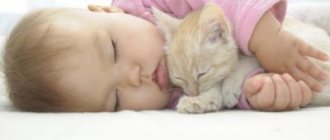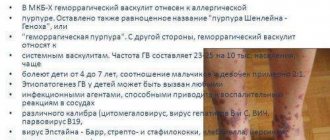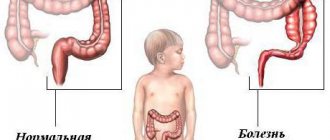05/04/2021 236 Otolaryngology
Author: Elena
Follicular tonsillitis is a purulent inflammation of the follicles of the tonsils, which has a high degree of infectivity and is transmitted to others during the first 2-3 days. In children, follicular tonsillitis causes serious consequences, so it is important for the child’s parents to follow the treatment prescribed by the doctor, as well as ensure proper rehabilitation.
[Hide]
The causative agent of the disease and modes of transmission
The causative agents of sore throat are microbes: staphylococci (80%), streptococci (10%) and a combination of two species (10%). These microorganisms constantly live in the child’s body, but at certain moments they become more aggressive. This is facilitated by hypothermia and contact with an infected person against a background of weakened immunity.
Methods of transmission of the disease:
- airborne;
- contact and household;
- fecal-oral;
- endogenous.
Thus, tonsillitis is transmitted by coughing, sneezing and poor personal hygiene.
The source of infection can be:
- toys;
- dishes;
- shared towel;
- other household items.
Less commonly, follicular tonsillitis occurs due to long-term caries or gum disease.
Causes
The most common causative agents of sore throat are streptococci, staphylococci and pneumococci. The route of spread is airborne. Children become infected mainly through common objects: poorly washed dishes, shared towels, toys, books, etc.
Thus, the main risk factors for developing the disease are:
- weakened immune system;
- hypothermia of the body - ice cream and cold drinks, swimming in water for too long, insufficiently warm clothes;
- contaminated food and common items;
- close contact with a sick person.
Incubation period and course of follicular tonsillitis in children
The incubation period of the disease varies from several hours to several days. The prodromal period (the onset of clinical manifestations) lasts about 3 days. The acute phase of the disease with a typical uncomplicated course lasts 7-8 days, after which the child recovers. If the disease becomes complicated or the child’s treatment is started late, the acute phase may last for 10 or more days.
You can learn about the peculiarities of the course of the disease in the video from the Health-Saving Channel.
First signs
The first signs of follicular tonsillitis in children are as follows:
- the disease is characterized by an acute onset with a sharp increase in body temperature (sometimes up to 40 degrees);
- The baby’s appetite noticeably decreases or disappears;
- depending on the age, the child becomes lethargic, is capricious, and cries;
- the anterior cervical lymph nodes enlarge and often cause pain;
- the tonsils swell, turn red, and a plaque forms on them, which the parents themselves can notice;
- a sore throat appears.
Subsequent development of the disease
The tonsils noticeably increase in size, ulcers appear on their surface, which burst after 2-3 days. The purulent mass spreads to nearby areas. The sore throat becomes noticeably worse. Sleep disturbance occurs - insomnia, anxiety. The headache may radiate to the ear. In case of severe intoxication of the body, abdominal syndrome (abdominal pain), diarrhea or constipation, and cramps occur.
Symptoms of intoxication
With follicular angina, the following symptoms of intoxication are present:
- chills;
- increased sweating;
- headache, dizziness;
- pain and aches in muscles and joints;
- tachycardia.
The disease is accompanied by severe malaise and a feeling of weakness.
Signs of illness when examining the pharynx
On swollen tonsils, under the follicular cover, yellow ulcers the size of a pinhead are visible. When examining the throat, you may observe light yellow or whitish-yellow dots (follicles) on the reddened tissue of the tonsils.
Features of the course in infants
In children, enlarged tonsils can cause asthma attacks. Vomiting and excessive salivation are often present. The follicles merge and burst, leading to abscesses. The newborn's tonsils become very swollen. The baby constantly cries, screams and may refuse to breastfeed.
At the slightest suspicion of a sore throat, parents of infants should seek urgent medical help.
Symptoms of follicular tonsillitis in children
Follicular tonsillitis, like most other forms of tonsillitis, debuts with a sore throat (this picture is observed in 80% of cases). Discomfort occurs acutely - on the first day after exposure to the provoking factor. The intensity of pain varies from mild to severe. This depends on the individual characteristics of the child’s body, the aggressiveness of microorganisms and the activity of the immune system. Associated symptoms of follicular tonsillitis in children:
- Fever with an increase in body temperature to 38-39°C.
- Swallowing disorder. A sore throat can make it difficult for a child to eat or even drink. Infants often refuse to breastfeed and cry constantly.
- An increase in size of the palatine tonsils with the appearance of mucosal hyperemia.
- Foci of gray-white plaque form on the surface of the tonsils. When touched, they are easily removed with a cotton swab.
- Lymphadenitis is an increase in the size of nearby lymph nodes.
- General weakness, moodiness, disturbance of normal sleep.
Follicular tonsillitis is characterized by alternating episodes of severe weakness, which coincide with an increase in temperature, and the patient’s normal state of health. Hospitalization of children with this disease is carried out in case of a sharp deterioration in condition or persistent fever that cannot be treated with antipyretic drugs at home.
Diagnosis of the disease
The primary diagnosis of tonsillitis is a physical examination of the child. Due to the distinctive signs of follicular tonsillitis, the attending physician will be able to make a diagnosis after examining the tonsils. In cases where it is necessary to accurately identify the pathogen, additional diagnostic methods are used.
These include:
- taking a smear from the surface of the tonsils;
- clinical blood and urine analysis;
- serological studies;
- pharyngoscopy.
Tests for follicular angina will show an increase in ESR, as well as an increase in segmented and band leukocytes.
Differential diagnosis
The clinical manifestations of follicular tonsillitis are similar to diphtheria and infectious mononucleosis. Therefore, it is important to carry out a differential diagnosis of these diseases before starting treatment. Their main difference is that diphtheria affects the kidneys, as well as the heart and nervous system. Mononucleosis affects the lymph nodes and spreads to the liver and spleen. Treatment for these diseases is radically different.
Differential diagnosis of follicular tonsillitis
Diagnostics
Objectively, the diagnosis is made based on the combination of the described symptoms, pharyngoscopy data and a general blood test.
Changes in blood composition characteristic of follicular tonsillitis:
- Neutrophilic leukocytosis is an increase in the number of neutrophils with bactericidal and detoxification functions, more than 70% of the total number of leukocytes.
- Eosinophilia is an increase in the number of eosinophils producing an antigen-antibody complex, more than 5% in adults and more than 7% in children under 12 years of age.
- An increase in ESR (erythrocyte sedimentation rate) to 60 mm/hour is a nonspecific factor that is a sign of an inflammatory process.
For differential diagnosis with diphtheria, a swab is taken from the throat and nose using a Loeffler stick.
Treatment methods
Treatment of follicular tonsillitis is a complex of measures based on antibiotic therapy. The disease in infants and children under one year of age must be treated in a hospital under the constant supervision of doctors. Older children, if the illness is not severe, can be treated at home.
The main standards for treating tonsillitis include the following methods:
- antibacterial and antihistamines;
- local antiseptics;
- symptomatic therapy;
- diet;
- compliance with strict bed rest.
In addition, in some cases, doctors refer children for surgery. In case of severe lymphadenitis, UHF therapy is performed.
Parents should know that failure to comply with bed rest during the period of fever contributes to damage to the child’s heart.
How to prevent dehydration
It is very important to drink enough fluids during illness. It is difficult for a child to swallow ordinary water due to a sore throat, but you can replace it with mineral water without gas. The alkali included in its composition acts as a local anesthetic and antiseptic. You can give babies herbal decoctions, but only after consulting with your doctor. Coltsfoot has proven itself well; rose hips and chamomile also have an anti-inflammatory effect.
Chamomile (RUB 70)
Operation
Follicular tonsillitis in children can become chronic and occur more than 7 times a year. In this case, the doctor refers the child for surgery. The procedure involves removing the tonsils and is called a tonsillectomy.
Additional indications for tonsillectomy:
- toxic-allergic symptoms of chronic follicular tonsillitis;
- hypertrophied palatine tonsils;
- purulent complications.
Reviews about this treatment method are conflicting, so parents must make a decision taking into account all the factors accompanying the child’s disease.
Drug treatment
Drug treatment of follicular sore throat at home includes taking antibiotics in combination with local and symptomatic treatment. Any means should be used only as prescribed by a doctor after appropriate examinations.
Drugs that are often used in pediatrics:
- Antibiotics: Ceftriaxone, Amoxiclav, Flemoxin. All of these medications can be used from birth, including on premature babies. The dose is selected individually.
- Antihistamines: Tavegil (from birth), Suprastin (from 3 years).
- Anti-inflammatory sprays: Tantum Verde (from 3 years), Oralcept (from 3 years).
After completing the course of antibiotics, it is advisable to use probiotics, for example, Linex (from birth) or Bifikol (from 6 months).
The dosage and methods of taking medications can be found in the table.
| Type of medication | A drug | Dosage | Method of administration |
| Antibiotic | Ceftriaxone Amoxiclav Flemoxin | 20-100 mg/kg/day 30 mg/kg/day 30-60 mg/kg/day | every 12 hours IV or IM every 8 hours i.v. tablets or suspension in 2-3 doses |
| Antihistamines | Tavegil Suprastin | 25 mg/kg/day 1/4-1/2 tablets | for 2 doses 2-3 times a day after meals |
| Anti-inflammatory | Tantum Verde Oralcept | 1 injection for every 4 kg of body weight, but no more than 4 injections – 3-6 years, 4 injections – 6-12 years | 2-6 days a week |
| Probiotics | Linex Bificol | up to 7 years – 1 sachet, over 7 years – 2 sachets 6-12 months – 3 doses, over 1 year – 5 doses | 1 daily during meals 1-3 daily 30-40 minutes before meals |
Treatment methods for sore throat in children
As a rule, treatment is carried out on an outpatient basis; hospitalization is necessary for complicated forms of tonsillitis. The exception is children under three years of age - they are recommended to be treated in a hospital, regardless of the severity of the disease.
Drug therapy
Includes antibacterial, anti-inflammatory and antipyretic agents. As auxiliary therapy, the following are used: immunostimulants, antihistamines, vitamins, probiotics and local therapy.
Table: drug treatment regimen
| Drug groups | Group representatives | Features of application |
| Antibiotics | Penicillins, cephalosporins, macrolides | The course of treatment is 7-10 days. The exception is Azithromycin - used for 3-5 days. |
| Antibacterial | Sulfonamides | When used for more than 5 days, hematological blood monitoring is necessary. |
| Antipyretics | Paracetamol, Panadol, Nurofen, Ibufen | Recommended use at temperatures above 38°C, in children under one year of age - above 37.5°C. |
| Immunostimulants | Imudon, Immunal, Kagocel, echinacea preparations | Contraindicated in autoimmune diseases. Not prescribed for children under 1.5 years of age. |
| Antihistamines | Zodak, Erius | Prescribed to reduce swelling of the throat and reduce allergic reactions to antibiotics. |
| Vitamins | Group B, C, ascorbic acid and others | B vitamins are involved in cellular metabolism and antibody synthesis, and promote the formation of red blood cells. Vitamin C – increases the body’s resistance to infections and is a strong antioxidant. |
| Probiotics | Bifidobacteria, lactobacilli | Prevents the development of dysbacteriosis during antibiotic therapy. |
| Local therapy | Antibacterial solutions (Hexoral), absorbable tablets, irrigating sprays | Local therapy is not used for children under 3 years of age, as there is a risk of asphyxia or laryngospasm. |
Photo gallery
In the photo below you can see the cost of some drugs.
Linex sachet (RUB 710)
Tavegil (233 rub.)
Ceftriaxone (25 rub.)
Tantum Verde (273 RUR)
Local treatment
As local therapy, rinsing with special solutions - Chlorhexidine or Furacillin - is used. The child must understand that the medicine should not be swallowed, and that any remaining medication must be spat out. This method is not suitable for infants. Solutions can be bought ready-made or prepared independently from Furacillin - 1 tablet is diluted in 200 grams of water. You can rinse up to 6 times a day for 5-7 days.
Antibiotics
Antibiotics are used to treat follicular tonsillitis:
- cephalosporin series;
- macrolide groups;
- penicillins;
- ampicillins.
Treatment lasts 5-10 days and should not be interrupted when improvements occur. Streptococci can develop their own immunity to antibacterial drugs, and strong agents may be needed to destroy them. Antibiotics are prescribed intramuscularly or orally, less often intravenously. Children are given syrups, older children - tablets.
Symptomatic treatment
To treat the main symptom of follicular tonsillitis - temperature, antipyretics are used. Children from birth are prescribed Paracetamol or Nurofen in the form of syrup, which can be replaced with tablets or injections. Paracetamol is used in a dosage of 15 mg/kg/day. Nurofen 50 ml 3 times a day. It often happens that the therapeutic effect of antipyretic drugs does not occur; in this case, the doctor may prescribe injections of Analgin with Diphenhydramine.
Nurofen for children (270 RUR)
If a child has a stuffy nose, you need to rinse it with solutions of ocean water:
- Aqua Maris;
- Zilch;
- Aqualor.
They can be used from birth; children are prescribed in the form of drops; older children (from 2 years old) can be used in the form of a spray. If it is necessary to eliminate swelling in the nose, Nazivin (from birth) 0.025-0.5% or Otrivin (from 3 years) is prescribed in a convenient form.
Folk remedies
You can treat a sore throat in a 2-3 year old child at home using folk recipes. The remedies described cannot cure tonsillitis on their own, but are an excellent help for parents. This type of treatment should be used after the approval of the pediatrician and strictly under his supervision.
The most effective methods that can be used at home:
- Gargling with a solution of salt and soda. Dissolve 1 tsp in warm boiled water. components. Apply 2-3 times a day. It is important to ensure that the solution is not hot. If a child cannot rinse his mouth on his own, this type of therapy cannot be used.
- Teas with anti-inflammatory effect: 1 tbsp. l. Chamomile flowers are poured into 1 liter of boiling water and infused under the lid for 15-20 minutes. The broth is filtered and diluted with warm boiled water. Then you should add honey at the rate of 1 tsp. for 200-250 ml of tea. You can take this drink 2-3 times a day.
- Mumiyo. The tablet dissolves in warm boiled water (until dark brown), the solution is used for rinsing. In this case, it is important not to make sudden movements so as not to injure the swollen tonsils.
Boosting immunity with green tea, rose hips or raspberry infusion will be an excellent help for the body of a sick child. The drink is taken warm and not strong.
In this video, a children's doctor talks about the treatment of sore throat in children, the video was provided by the Belarus1 channel.
Rehabilitation and child care
During treatment of the disease, the child must be provided with proper care and living conditions. In the children's room it is necessary to maintain a humidity of 50-60% and an air temperature of 19-20 degrees. These two conditions will significantly influence the timing of the disease. During the heating season, you can install humidifiers, as well as hygrometers and thermometers.
It is important to stick to your diet during treatment.
Need to exclude:
- spicy;
- roast;
- salty;
- spices.
It is recommended to add fruits and vegetables to the child’s menu, as well as freshly squeezed juices and/or vitamin complexes, which should be selected by the attending physician. It is advisable to grind the food in a blender and do not forget to rinse your mouth after eating. It is necessary to monitor your health, avoid hypothermia, and do not consume cold drinks or foods. Physical activity should be limited for 3-4 weeks after illness, but it is not necessary to completely remove it.
Possible complications and consequences
During the disease, complications may begin that occur on days 3-6 of treatment.
They are associated with the spread of inflammation to:
- nearby organs - ear, nose;
- tissue – abscess, peritonsillitis, purulent lesion of lymphoid tissue.
Complications after a sore throat occur rarely, 3-4 weeks after recovery.
The most common include:
- meningitis;
- Lenier's syndrome;
- sepsis;
- infectious shock;
- arthritis;
- rheumatism;
- glomerulonephritis.
Sore throat in children
Streptococcal tonsillitis has an acute onset. The body temperature rises to 38-39 °C, the child shudders, a headache begins, and swallowing is also painful. Symptoms are most pronounced on the first day of illness. Older children may complain of general weakness, poor appetite, and sore throat, which can radiate to the ear and sides of the neck. Severe cases are characterized by delirium, repeated vomiting, convulsions, and agitation. The appearance of a patient with angina is typical. There is dry skin, facial flushing, blush on the cheeks, brightness and redness of the lips, as well as their dryness, sometimes sticking in the corners of the mouth. The oropharynx is usually red (hyperemic), and redness also spreads to the tonsils, soft and hard palate, and the back wall of the pharynx. But there are cases when hyperemia affects only the tonsils and palatine arches. The tonsils are enlarged mainly due to infiltration and swelling. With lacunar tonsillitis, plaque (overlay) is visible in the lacunae of the tonsils. Often such overlays have a yellowish-whitish tint; they can be easily removed with a spatula and rubbed between glass slides. This means that they consist of pus and detritus.
With follicular sore throat, whitish follicles are visible on the tonsil, the diameter of which is from 2 to 3 mm, they rise slightly above the tonsil. They cannot be removed with a tampon or spatula, since the follicles are purulent masses located under the epithelium. They are formed as a result of the destruction of lymphoid follicles of the tonsils. Usually microabscesses mature and open, which causes a new rise in body temperature and the appearance of superficial purulent deposits in the form of islands on the tonsils.
If the sore throat is necrotic, a plaque with a pitted, uneven, dull surface of a greenish-yellow or gray hue is visible on the affected areas of the tonsils, going deep into the mucous membrane. In frequent cases, plaque becomes saturated with fibrin and becomes dense. Attempts to remove them cause bleeding. After the application is rejected, a tissue defect is formed that has a whitish tint, an uneven, bumpy bottom, and an irregular shape. With streptococcal infection, necrosis can affect the arches, uvula, and back wall of the pharynx, and not just the tonsils.
In addition to changes in the oropharynx typical for angina, regional lymph nodes are enlarged in all patients. On palpation they are dense and painful. The severity of a sore throat is determined by how severe the general and local disorders are; general toxic disorders are of decisive importance: the height of the fever, changes in the cardiovascular system, the central nervous system, and the endocrine system.
Flow. As a rule, streptococcal tonsillitis has an acute course with a favorable outcome. If adequate treatment is carried out on time, the symptoms of intoxication and local changes in the oropharynx disappear in less than a week, and a period of recovery of the body begins. Complications may occur if the pathological process has transferred to nearby organs, which causes sinusitis, purulent lymphadenitis, and otitis media. Allergic complications, such as myocarditis, glomerulonephritis, etc., may occur, although very rarely.
Features of sore throat in young children. In children under 3 years of age, streptococcal tonsillitis usually develops against the background of ARVI. Symptoms of ARVI and symptoms of damage to the oropharynx appear, and catarrhal symptoms (runny nose, cough) appear for a long time. Changes in the oropharynx correspond to the form of tonsillitis, but there is a slow clearing of the tonsils from the deposits, persistent hyperemia and swelling of the mucous membranes of the oropharynx persist, as well as enlargement of the tonsils and regional lymph nodes. Such patients are more likely to develop complications.
Prevention
The main place in the prevention of follicular tonsillitis is the treatment of chronic diseases of the ENT organs and teeth. It is important to monitor the child’s diet so that his body receives a sufficient amount of vitamins and microelements. The room where the baby lives should not be damp or dry.
Additional disease prevention measures include:
- timely and complete treatment of acute respiratory infections and acute respiratory viral infections;
- moderate physical activity;
- reducing the number of stressful situations;
- avoiding local and general hypothermia;
- proper organization of sleep and daytime rest.
If there are several children in the family, the sick child should be given separate dishes and other items for daily use.
Video “Sore throat in children”
In the video from the channel Doctor Komarovsky, a famous children's doctor talks about what a sore throat is and how to treat the disease.
Do you have any questions? Specialists and readers of the KROHABABY website will help you ask a question
Was this article helpful?
Thank you for your opinion!
The article was useful. Please share the information with your friends.
Yes (100.00%)
No
X
Please write what is wrong and leave recommendations on the article
Cancel reply
Rate the benefit of the article: Rate the author ( 1 vote(s), average: 5.00 out of 5)
Discuss the article:









